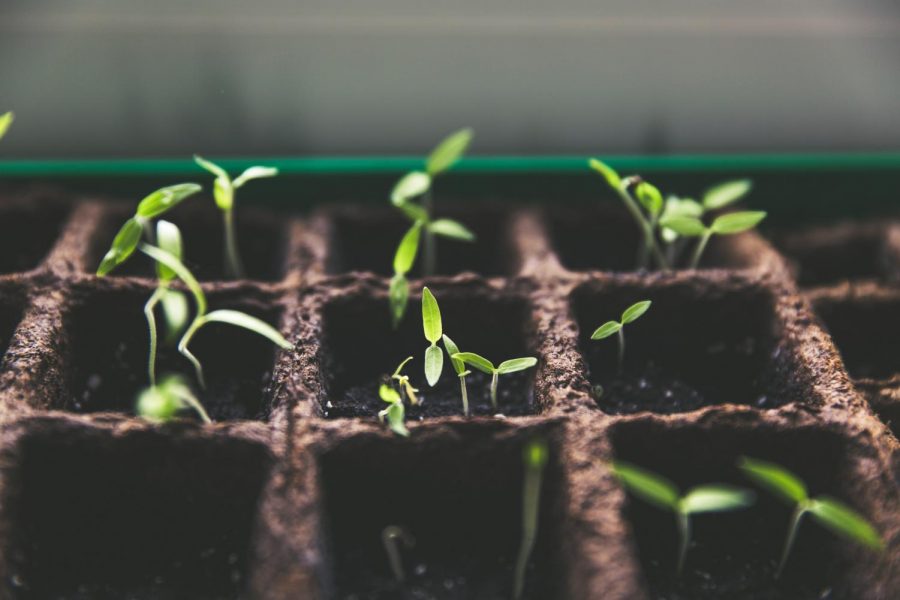SMSU Greenhouse: Marshall’s Miami
April 25, 2020
While there are six inches of snow, aggressive winds, and withering trees and flowers in Minnesota, it’s still balmy like spring in the SMSU greenhouse, energetic and pleasant.
SMSU’s greenhouse has a lot to explore, especially during chilly winter. You can find a cactus that looks like a brain, different flavors of mint that smells like chocolate, lemon and grapefruit, an amazing Venus Fly Trap, and elegant orchids blooming quietly.
“We have a coffee tree, two pineapple trees, and three pineapples are coming up. They taste good, just like those you bought in stores,” said Jacky Aslesen, the greenhouse manager, who oversees the day-to-day operations. “There’s a date tree, a fig tree, and in the corner is a banana tree. We have a good hyacinth, gorgeous; it should be blooming in a couple weeks.”
The greenhouse contains a wide range of plants from fruits and vegetables to ornamental flowers to succulents. Aslesen, who intends to get new kinds of plants in the future, says, “I’m always looking for something unusual to bring in. We tried growing something from India here, but it hasn’t come up. But it’s a special seed; it’s supposed to be food crop in India. Sometimes we even grow weeds for the weed class; they have weed science.”
Aslesen said the greenhouse switches the plants according to the season. Plants that survive in summer go outside and Aslesen brings them back in fall.
The SMSU greenhouse was built at the same time the SM building was constructed when the university was built in 1964. It was renovated in 2010 when the science labs in SM were renovated and updated. The greenhouse is separated into two sections automatically controlled by computer so that the temperature and light levels remain at appropriate levels according to the environment the plants need to grow.
The greenhouse is an important space for the science department. They grow a variety of plants used for teaching purposes. They are housed primarily in the front section. The back section is used for the many research projects done by students in biology, environmental science, and agriculture classes.
“Our greenhouse has heaters that keep it warm in the wintertime, and a cooling system to keep it cool in the summertime. We also have special lights to provide enough light to grow plants in the wintertime,” said environmental science professor Emily Deaver.
Aslesen said professors and students from environmental science, biology, agronomy and botany classes use the greenhouse. The students learn soil science, plant structure, seed development, plant nutrition, fertilizer, and chemical need for each type of plant. “Sometimes they may be testing different soils and how plant growth [is affected by] soil… to see what hinders plant growth, what helps plant growth, and the different factors [that affect] on germination rate.”
Students can study and conduct experiments in the greenhouse. Aslesen said, “Work study is allowed, but we have that position filled right now. But if somebody wants to work with the teacher or a special thing for class, then they can come and work to help out. They usually have to go through a class to help the professor [on greenhouse projects].”
Not only is the greenhouse an important resource for SMSU students, but it also provides educational tours for local school groups visiting campus. Aslesen said “Marshall school students often tour the greenhouse. Usually, a lot of second graders in the area will come in 4-H clubs . . . By the way, it’s also open to the public during regular school time,” said Aslesen. So, everyone is welcomed to visit the greenhouse, get to know different kinds of plants, and be close to nature.
The greenhouse is maintained in an environmentally friendly manner. “We try to do something that won’t harm people. Like I use diatomaceous earth, which is like a talcum powder, and it is food grade. So, it doesn’t hurt people. It appears is this exoskeleton and it dries up in a few days,” Aslesen said. “All I try to use are things that will [help the plants] when they’re in a young stage; it won’t hurt people. I don’t think that any of the chemicals we have hurt the environment. Biological control, that’s called.”
Greenhouse does three fundraisers in a year, during which people can get a couple of plants. These fundraisers occur in the fall, spring, and summer. The plants they sell include succulents, spider plants, and cacti, which are attractive in price and quality. “We have plant fundraisers like the one they did in the hallway. When they do plant fundraisers, the money goes to the Science Department.” When the next plant fundraiser happens, you should check it out!


